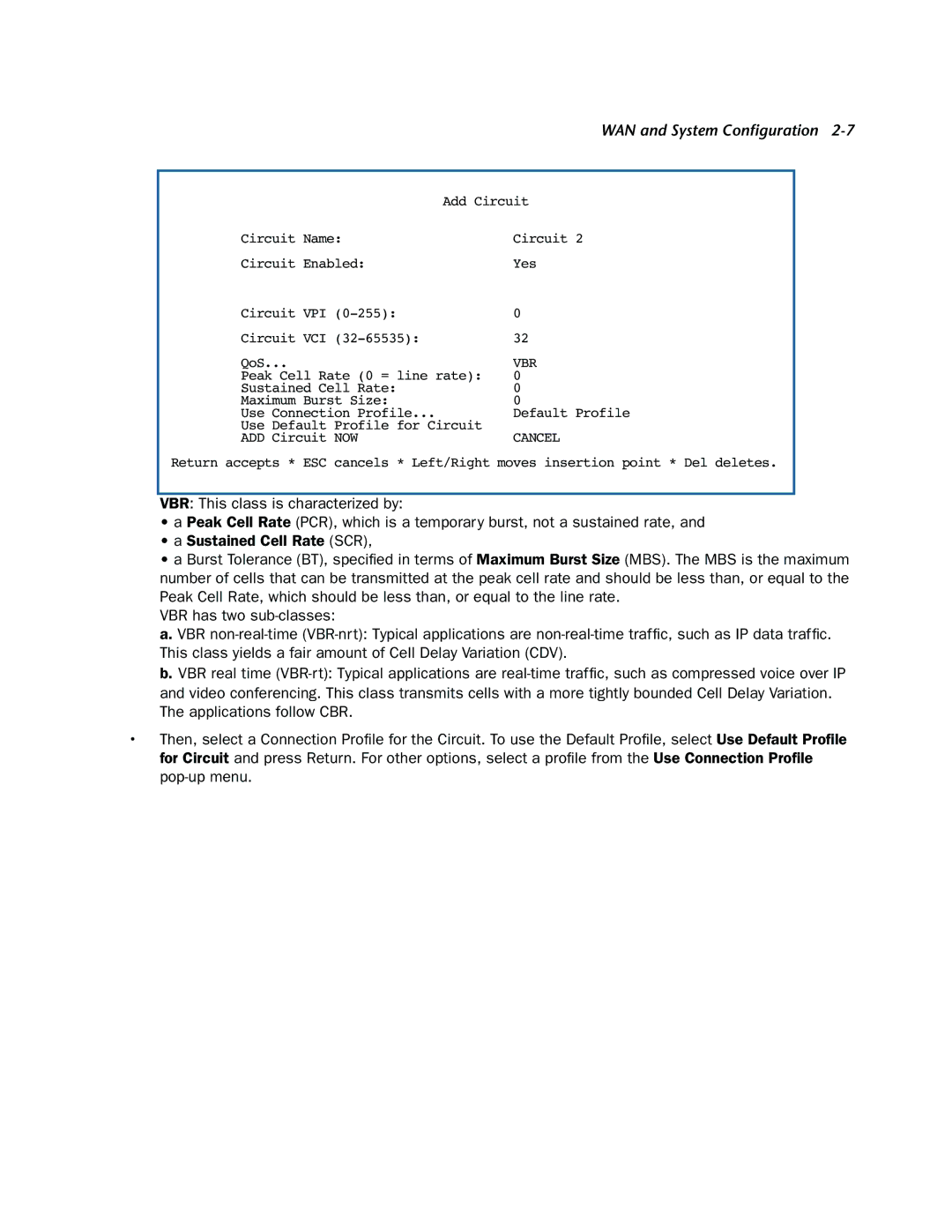
WAN and System Configuration 2-7
Add Circuit | |
Circuit Name: | Circuit 2 |
Circuit Enabled: | Yes |
Circuit VPI | 0 |
Circuit VCI | 32 |
QoS... | VBR |
Peak Cell Rate (0 = line rate): | 0 |
Sustained Cell Rate: | 0 |
Maximum Burst Size: | 0 |
Use Connection Profile... | Default Profile |
Use Default Profile for Circuit |
|
ADD Circuit NOW | CANCEL |
Return accepts * ESC cancels * Left/Right moves insertion point * Del deletes.
VBR: This class is characterized by:
•a Peak Cell Rate (PCR), which is a temporary burst, not a sustained rate, and
•a Sustained Cell Rate (SCR),
•a Burst Tolerance (BT), specified in terms of Maximum Burst Size (MBS). The MBS is the maximum number of cells that can be transmitted at the peak cell rate and should be less than, or equal to the Peak Cell Rate, which should be less than, or equal to the line rate.
VBR has two
a. VBR
b. VBR real time
•Then, select a Connection Profile for the Circuit. To use the Default Profile, select Use Default Profile for Circuit and press Return. For other options, select a profile from the Use Connection Profile
